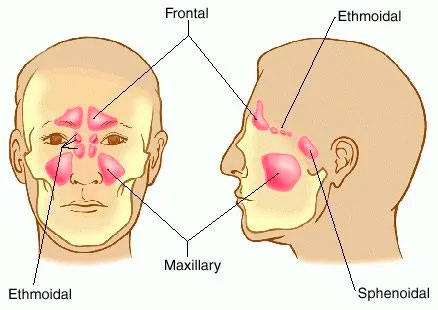Field of Dreams
Two high school graduates are discussing their future college plans. The first says, “I’m planning on going into farming, it’s what my father did and it makes good money.” The second asks, “What type of farming? Wheat, corn, livestock?”
“I’m not sure, there are so many fields to choose from.”
Marty S.
Don’t Mind Waiting
I went to a restaurant the other day. I arrived five minutes early. The owner asked if I didn’t mind waiting. I said I didn’t mind. He was very confused when I put an apron on and started taking orders.
Lauren K.
It Could’ve Been Worse
James is walking on a downtown street one day, and he happens to see his old high school friend, Harry, a little ways up ahead. “Harry, Harry, how are you?” he greets his old buddy after getting his attention.
“Not so good,” says Harry.
“Why, what happened?” James queries.
“Well,” Harry says, “I just went bankrupt and I’ve still got to feed my family. I don’t know what I’m going to do.”
“Could have been worse,” James replies calmly. “Could have been worse.”
A month or so later, James again encounters Harry, in a restaurant. “And how are things now?” he asks.
“Terrible!” says Harry. “Our house burned down last night.”
“Could have been worse,” says James, again with total aplomb, and goes about his business.
A month later, James runs into Harry a third time. “Well, how goes it?” he inquires.
“Oh!” says Harry. “Things just get worse and worse. It’s one tragedy after another! Now my wife has left me!”
Harry nods his head and gives his usual optimistic-seeming little smile, accompanied by his usual words: “Could’ve been worse.”
This time, Harry grabs James by the shoulders. “Wait a minute!” he says. “I’m not going to let you off so easy this time. Three times in the past few months we’ve run into one another, and every time I’ve told you the latest disaster in my life. Every time you say the same thing: ‘Could have been worse.’ This time, I want you to tell me: how in Heaven’s name could it have been any worse?”
James looks at Harry with the same little wisp of a smile. “Could have been worse,” he says. “Could have happened to me…”
Take Note
Bonnie knew she was a little bit of a worrier but with a big surgery coming up, she wasn’t going to leave anything to chance. So, prior to her operation, she taped notes to her body for the surgeon… “Dr. Stern, take your time,” “Don’t cut yourself,” “No need to rush,” “Wash your hands…”
After surgery, as she was in her bed, Bonnie discovered a new note taped to her, this one from Dr. Stern, “Has anyone seen my wristwatch?”
Florence G.
Angry Boss
My boss just texted me. He said, “Where have you been? I’ve been trying to find you all day!!” I told him that good employees are hard to find.
Hymie S.
Patient Pens
There was a jar at the dentist’s office labeled “patient pens only.” I told the assistant that it was a good idea – since you wouldn’t want to collect any “impatient” pens. She was not amused…
Carl A.
Toy Story
There waMoishe takes his four kids to a toy store. As soon as they enter, Moishe is given a free raffle ticket – and oy, what luck – he wins a ten-dollar gift certificate!
“Gather around children,” he says to them, “we’ve just won a gift certificate. One of us can choose a toy for $10.”
“Yay!” they all shout out.
“So, who do you think should have it?” Moishe asks them.
Silence.
“Okay then,” Moishe continues, “let me help you decide. Who is the most obedient amongst us? Who never argues or talks back to Mommy and who always does whatever she asks?”
“Okay Dad, you win,” they all shout. “You should have the toy!”
Victor G.
Car Trouble
Estelle came home to her husband Sol and said, “Honey, the car won’t start, but I know what the problem is.” Sol asked her what it was and she told him that there was water in the carburetor.
Sol thought for a moment, then said, “Don’t take this the wrong way honey, but you don’t know the carburetor from the catalytic converter!”
“No, there’s definitely water in the carburetor!” she insisted.
“Okay, that’s fine, I’ll just go take a look. Where is it?”
“In the lake.”
Nancy R.
Summer Job
A college grad decides to get a job at a hardware store for the summer. He shows up on his first day of work and his boss hands him a broom.
“Here, your first task is to sweep out all the aisles. After that, I’ll show you where the rest of the cleaning supplies are.”
The grad looks at the broom and says to his boss, “I don’t think you understand, I’m a college graduate.”
His boss replies, “Oh, no problem. I can show you how to use a broom.”
Jesse F.
Clean Occupation
My college counselor asked me what my post-graduate plans were, and I told her I was interested in cleaning mirrors. When she asked why, I just shrugged and told her it was a job I could see myself doing.
Madeline D.
Temper, Temper
My friend threw a huge tantrum last night. He even hit me with a few cans of Coke, Dr. Pepper, and Sprite! Fortunately, they were all soft drinks.
Marlene P.
Two Fingers Up
It’s the first day at summer school at Eitz Chaim Hebrew School and as soon as the first class begins, the teacher, Mrs. Rosenberg, tells everyone, “Listen children. If at any time during the lesson any one of you needs to go to the restroom, all you have to do is to hold up two fingers.”
After a few moments of thinking about what he’s just heard, little Maxie asked, “Mrs. Rosenberg, how will that help?”
Norman T.
Two Left Feet
Two elderly gentlemen, David and Isaac, are sitting in a doctor’s office comparing notes when they realize that they are suffering from the same symptoms, even in the same foot!
David goes in to see the doctor first and lets out blood curdling screams that Isaac has never heard in his life.
David comes out and sits in the waiting room, curious to see if Isaac’s treatment will be as painful as his.
In two minutes Isaac comes out smiling from ear to ear.
“I don’t get it,” says David. “My treatment was so painful and yours was a breeze.”
Isaac whispered, “Do you think that for a moment, after listening to your screams, that I would show the doctor the right foot?”
Jacob G.












